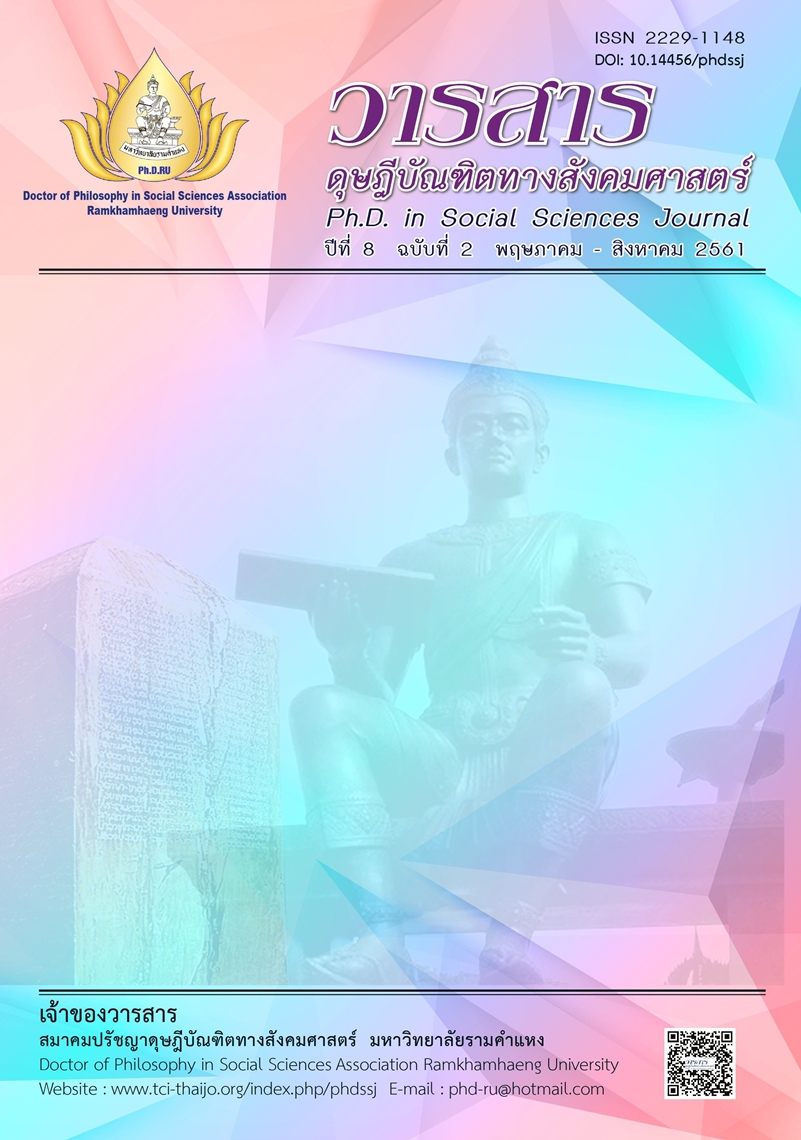EFFECTIVENESS OF INFORMATION SYSTEM MANAGEMENT OF THE ISLAMIC BANK OF THAILAND
Main Article Content
Abstract
The aims of this research were 1). To study the effectiveness levels in information technology of Islamic Bank of Thailand 2). To study the factor of management leaded to effective of information technology management of Islamic Bank of Thailand and 3). To develop the recommendation for information technology management effectiveness of Islamic Bank of Thailand by studying sampling group from Islamic Bank of Thailand officer for 329 people totally. Tools had been used in questionnaires at 5-level estimation scale. Using data analysis as Frequency and Percentage; therefore, statistics used to test hypothesis such using correlation analysis with testing statistics value, Correlation Coefficient of Pearson and statistics model of information technology management effectiveness of Islamic Bank of Thailand by Multi-Regression Statistics which specified statistical details signification that used in data analysis at level 0.01
Research result found that there was information technology effectiveness of Islamic Bank of Thailand in the big picture at high level ( = 3.54, SD = 0.74), the satisfaction with working at high level (
= 3.86, SD = 0.76) and useful of information sources at medium level (
= 3.38, SD = 0.73) in term of factor of management through effectiveness of information technology management in whole at high level (
= 3.19, SD = 0.74) further there was standard of security (ISO/IEC 27001), information technology performance driven economy and moving on learning organization was medium level (
= 3.31, SD = 0.74,
= 3.22, SD = 0.74,
= 3.21, SD = 0.74) respectively.
Article Details
Academic articles, research articles, and book reviews in the Ph.D. in Social Sciences Journal are author’s opinions, and not the publisher’s, and is not the responsibility of the Ph.D. in Social Sciences Journal Philosophy Association, Ramkhamhaeng University. (In the case that research is done on human, the researcher has to be trained in Ethics for Doing Research on Human Training and has to produce the evidence of the training).
References
Cronbach, L. J. (1951). Coefficient alpha and the internal structure of tests. Psychometrika, 16(3), 297-334.
Gibson, J. L. (2000). Organizations behavior (7th ed.). Boston: Irwin.
International Organization for Standardization (ISO) ISO 27001. (2007). Safety standards. Bangkok: National Electronics and Computer Technology Center. [In Thai]
Kaplan, R. S., & Norton, D. P. (1996). The balanced scorecard. Boston: Harvard Business School Press.
Marquardt, M. J. (2011). Building the learning organization: Achieving strategic advantage through a commitment to learning (3rd ed.). Boston: Nicholas Brealey.
Ness, L. R. (2005). Assessing the relationships among IT flexibility, strategic alignment and IT effectiveness. Ph.D. dissertation study overview and finding. Minneapolis, MN: North central University.
Pukdeeyotin, S. (2010). Development of information technology mangement indicators for learning organization of bank employee in the Westren region of Thailand. Ph.D. dissertation teachnology, Phetchaburi Rajabhat University. [In Thai]
Seriphong, P. (2008). ISO 27001 introduction to security management system (11th ed.). Bangkok: Thailand Productivity Institute. [In Thai]
Vanichbuncha, K. (2011). Use SPSS for windows to analyze data (18th ed.). Bangkok: Chulalongkorn University, Faculty of Commerce and Accountancy. [In Thai]
Watthanapasukkul, C. (2007). The usage of information technology and the efficiency of commercial banks. Bangkok: Kasetsart University, Library Network Project in Thailand. [In Thai]
Yamane, T. (1973). Statistics: An Introductory Analysis (3rd ed.). New York: Harper & Row.


